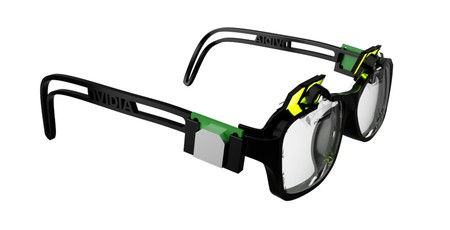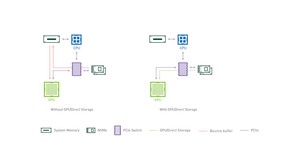
Nvidia's research division has showcased a pair of augmented reality glasses at the SIGGRAPH conference this afternoon, the first designed for those who use prescription lenses and the second using a deep-learning system to adjust for the wearer's gaze in real time.
Augmented reality has proven moderately successful in the mobile arena, with games like Pokémon Go overlaying computer-generated imagery on the real world using the cameras and sensors built into modern smartphone handsets. Its wearable equivalent, though, has had a tougher time of it: Google Glass failed to set the world alight, while Microsoft's HoloLens remains focused on high-budget enterprise use - and may not even be great for that.
Nvidia Research, the 200-strong research and development arm of the eponymous computing company, is hoping to turn that around with a pair of prototype headsets based on two different technologies: The first aims to make wearable augmented reality more bearable for those who rely on prescription lenses, while the second aims to improve visual quality of the rendered imagery.
The first prototype, dubbed Prescription AR, is claimed to be considerably thinner and lighter than current-generation augmented reality headsets. The computer-generated imagery appears throughout the field of vision, rather than in a narrow field of view to the centre, and the lenses can be ground to a custom prescription - meaning there's no need to try balancing the AR glasses over a pair of normal glasses. 'This,' Nvidia Research claims of its creation, 'is much closer to the goal of comfortable, practical, and socially-acceptable AR displays than anything currently available.'
The second headset, by contrast, is something a little different. The Foveated AR headset tracks the wearer's gaze and, using a deep-learning algorithm, adjusts the resolution and focal depth of displayed imagery to match where the user is looking - increasing both visual fidelity and the effective field of view. The prototype works by combing two displays per eye: The first display offers a high resolution with a relatively narrow field of view and targets the portion of the retina where visual acuity as is the highest; the second is lower resolution but with a considerably wider field of view, for peripheral vision. The result, Nvidia claims, is a wide and high-quality overlay without the power and computational requirements of a traditional full-FOV high-res display.
More information on the headsets, plus other technologies shown off at SIGGRAPH including an improved version of Nvidia's GauGAN neural-network sketching tool, can be found on the Nvidia blog.

MSI MPG Velox 100R Chassis Review
October 14 2021 | 15:04








Want to comment? Please log in.